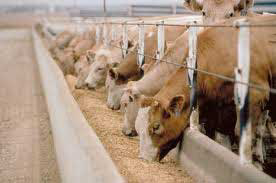Anderson Hay & Grain opens new processing facility

Anderson Hay & Grain, a leading US hay exporter, has opened a new hay processing and shipping facility close to the ports of Los Angeles and Long Beach.
A renovated 220,000-square-foot warehouse with three hay presses for making small, half-cut bales and big bales is now the largest hay processing facility close to a port in the Pacific Southwest, said Mark T. Anderson, company president.
That distinction had been held by ACX Pacific Northwest Inc. that has a 150,000-square-foot, two-press facility across Pacific Coast Highway from Anderson’s plant in Wilmington. ACX, a top exporter, is headquartered in Bakersfield and has plants in Wilmington, Stockton and Ellensburg. Anderson Hay & Grain has plants in Wilmington, Ellensburg and Aurora, Ore.
US hay exporters, who are mainly on the West Coast, have been losing business to other countries in recent years because of the high cost of US hay, exporters have said. The new plant enables Anderson to build supply from growers in California, Arizona, Nevada and Utah.
“As this plays out, 30% of our volume could be coming out of the Southwest and this plant,” Anderson said.
But the Northwest will remain an important part of the whole picture that can vary with market conditions and product quality affected by weather, he said.
Supply of old crop is not as short right now prior to 2013 production as exporters expected so pricing is flat, Anderson said.
Anderson Hay & Grain expected 80 to 100 overseas customers, ocean carriers, trucking company representatives and Wilmington city officials to attend an open house of the new plant March 27.
Renovation included installation of dust systems and ensuring adequate power to run the presses, Anderson said. The investment was “substantial” and includes a fleet of heavy-haul trucks that can carry 40-foot ocean containers of 28 short tons versus lighter loads of 24 tons, he said.
The plant is within a heavy-weight corridor where certain streets are built for heavy loads and more hay per container saves in shipping costs, he said.
The plant employs 50 people and can handle large amounts of hay. Anderson would not say how much. The neighbouring, smaller ACX plant can store up to 14,000 metric tons of double-compressed hay and presses 150,000 to 175,000 tons annually, an ACX official has said.











